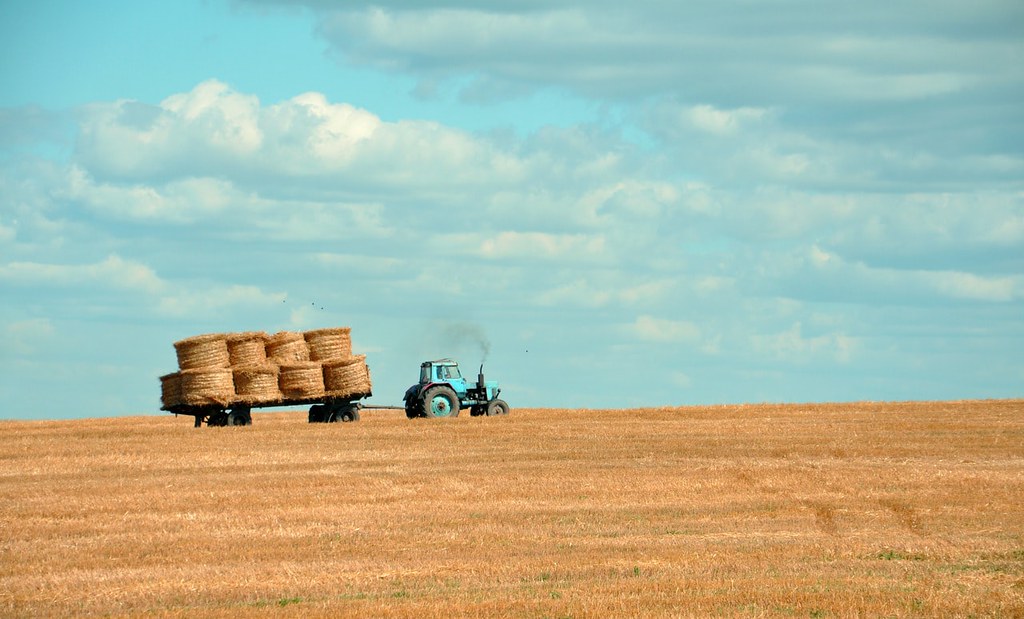英國卡迪夫大學(Cardiff University)的一項新研究顯示,由污水廠污泥再製成的肥料中,因為含有高濃度的微塑膠,整個歐洲的農田正成為全球最大的微塑膠儲存庫。
最初從汽車輪胎、合成紡織品、油漆和個人保養產品排放到環境中的微塑膠,並沒有在污水處理廠中消失,而是再次出現在農田、海洋深處和世界最高的山峰。
每年710兆個微塑膠顆粒 被倒回歐洲土壤
「我們的研究想知道污水處理廠有無完全移除微塑膠,還是實際上仍將污染轉移到環境中,」主要作者、卡迪夫大學工程學院研究生洛夫蒂(James Lofty)說,「自來水公司明顯缺乏策略管理污水廠污泥中的微塑膠,也就是說這些污染物會被運回土壤並最終返回水生環境。」
這種讓微塑膠回到土壤和水域的做法與歐盟管理微塑膠的目標背道而馳。去(2021)年5月12日,歐盟執委會通過了「實現空氣、水和土壤零污染」的行動計畫,這是《歐洲綠色政綱》的一項重要成果。計畫設定了2030年將釋放到環境中的微塑膠減少30%的目標。
卡迪夫大學的科學家與曼徹斯特大學的研究人員合作,估算出每年有3萬1,000至4萬2,000噸微塑膠——即多達710兆個微塑膠顆粒——被倒回歐洲土壤中,這也反映了海洋表層水中的微塑膠濃度。
每克污泥含24個微塑膠顆粒 英國土壤受污染量最高
這份發表在《環境污染》(Environmental Pollution)期刊上的研究,從英國南威爾斯紐波特的納許污水處理廠採集樣本,該廠處理來自30萬人口的合流污水。
他們的分析顯示,處理廠可以100%從流入的污水中去除尺寸為1到5公釐的大型微塑膠顆粒,避免這些塑膠顆粒釋放到水生環境中。不過研究團隊估計,處理廠生成的污泥中,每克含有多達24個微塑膠顆粒,相當於污泥重量的1%。
污水廠污泥通常會被各農場用做肥料,散佈全歐洲,因此研究人員將這些資料加上歐盟執委會和歐盟統計局的數據,用於評估整個歐洲大陸使用污水廠污泥當肥料的影響。
由於研究人員沒有分析尺寸小於1公釐的微塑膠,因此實際總體微塑膠濃度可能遠高於他們的估計。
研究結果發現,英國的土壤微塑膠污染量最高,每年每平方公尺農田增加500至1,000個微塑膠顆粒,其次是西班牙、葡萄牙和德國。
污泥再利用 永續不成反污染農地
在整個歐洲,污水廠污泥通常用作農業用地的永續和再生肥料來源,部分原因是歐盟指令要求將污水廠污泥從垃圾掩埋場和焚化爐轉移到能源生產和農業。
散佈在農田上的微塑膠,最終會透過地表水徑流或滲入地下水回到自然水道。尺寸小於5公釐的微塑膠是野生動物的威脅,因為它們很容易被攝入並攜帶污染物、有毒化學物質和有害病原體,可能會影響整個食物鏈。
「我們的研究結果突顯整個歐洲土壤問題的嚴重性,也顯示在農地上撒播污泥的做法,可能使農地成為全球最大的微塑膠污染庫之一,」洛夫蒂警告。
「目前歐洲沒有相關法律,能依據微塑膠暴露量和毒性,限制其進入再利用污泥中的量。⋯⋯我們應該增加對污水廠污泥和農業土壤中微塑膠濃度的標準化監測,才能更準確地了解整個歐洲土壤受污染的情況,」洛夫蒂建議。
Farmlands across Europe are becoming the largest global reservoir of microplastics due to the high concentrations found in fertilizers derived from sewage sludge, new research from Cardiff University demonstrates.
Instead of being removed from wastewater at treatment plants, microplastics originally shed into the environment from vehicle tires, synthetic textiles, paints, and personal care products are showing up again on farmlands, in ocean depths and on the tops of the world’s highest mountains.
“Our research questions whether microplastics are in fact being removed at wastewater treatment plants at all, or are effectively being shifted around the environment,” explained lead author of the study James Lofty, a research student with Cardiff University’s School of Engineering.
“A clear lack of strategy from water companies to manage microplastics in sewage sludge means these contaminants are transported back into the soil and will eventually return to the aquatic environment,” Lofty said.
This return of microplastics to the soils and waters is contrary to the European Union’s goals for the management of microplastics. On May 12, 2021, the European Commission adopted the EU Action Plan, “Towards a Zero Pollution for Air, Water and Soil,” a key deliverable of the European Green Deal. It sets the goal of reducing the microplastics released into the environment by 30 percent by 2030.
But scientists from Cardiff University, working with University of Manchester researchers, estimated that between 31,000 and 42,000 tonnes of microplastics – up to 710 trillion microplastic particles – are applied to European soils every year, mirroring the concentration of microplastics found in ocean surface waters.
In their study, published in the journal “Environmental Pollution,” the team estimate that microplastics removed from raw sewage at wastewater treatment plants go on to make up roughly one percent of the weight of sewage sludge, which is commonly used as a fertilizer on farms across Europe.
The UK was shown to potentially have the highest amount of microplastic contamination in its soils, with 500 to 1,000 microplastic particles per square meter of agricultural land applied per year, followed by Spain, Portugal and Germany.
Sewage sludge is commonly used on agricultural land as a sustainable and renewable source of fertilizer throughout European countries, in part due to European Union directives that promote the diverting of sewage sludge away from landfill and incineration and towards energy production and agriculture.
Microplastics spread onto farmland will eventually be transported back into the natural watercourse by means of surface water run-off or infiltration to groundwater.
Less than five millimeters in size, microplastics pose a threat to wildlife as they are easily ingested and can carry contaminants, toxic chemicals and hazardous pathogens, potentially impacting the whole food chain.
In their study, the team took samples from the Nash Wastewater Treatment Plant in Newport, South Wales, which treats the combined sewage from a population of 300,000.
Their analysis revealed that the treatment plant was 100 percent effective in removing large microplastic particles one to five mm in size, from incoming sewage that would otherwise be released into the aquatic environment.
Each gram of sewage sludge was shown to contain up to 24 microplastic particles, roughly one percent of its weight.
This data was then used to assess the impact across Europe using figures from the European Commission and Eurostat on the use and application of sewage sludge as a fertilizer across the continent.
As the researchers did not analyze microplastics that were less than one mm in size, the overall concentrations are likely to be a lot higher than their estimates.
“Our results highlight the magnitude of the problem across European soils and suggest that the practice of spreading sludge on agricultural land could potentially make them one of the largest global reservoirs of microplastic pollution,” Lofty warned.
“At present, there is currently no European legislation that limits or controls microplastic input into recycled sewage sludge based on the loads and toxicity of microplastic exposure,” he said.
“Efforts should be made to increase standardized monitoring of microplastic concentrations in sewage sludge and agricultural soils, which would provide a more accurate picture of contamination levels in soils across Europe,” Lofty advised.
※ 全文及圖片詳見:ENS








